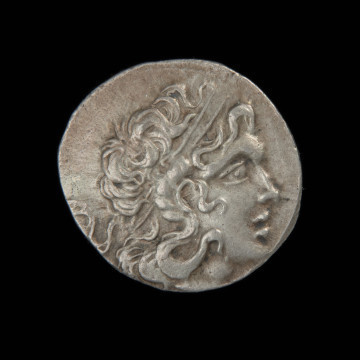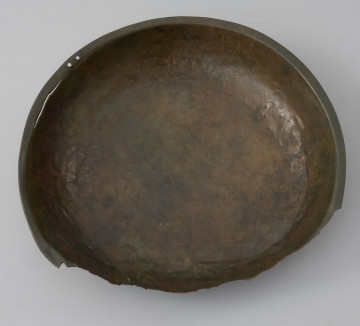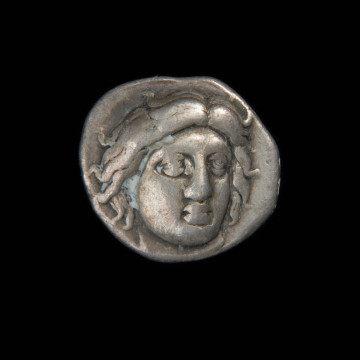
Tetradrachma
287 p.n.e. — 281 p.n.e.
National Museum in Szczecin
Part of the collection: Antique coins
Alexander III, called the Great (336-323 BC), created a great empire, stretching from Greece and Egypt to India in a short time. The whole area thus came under Greek culture, language and customs. Access to local deposits of precious metals and Persian gold and silver made it possible to produce coins circulated throughout the vast state. Minting was organised based on the Attic weight system, according to which silver drachms (4.36g) and tetradrachms (17.44g) and gold staters were minted. Bronze coins completed the circulation. The silver issues bore the image of the head of young Heracles in a lion's skin, whose features resembled Alexander's, and the figure of Zeus sitting on a throne with an eagle in his hand. In the Greek world, coins' obverses were decorated with images of specific deities, heroes or sacred symbols. Living people could not afford it. There was a revolution in monetary iconography, and the Heracles's image was an allusion to Alexander as a hero after his death idolised and recognised as the son of Zeus Ammon, whose portraits appeared on the coins of his successors (Diadochi). On the reverse of the presented coin, we see an image of Zeus on a throne with an eagle (Zeus Aetoforos), in a pose reminiscent of the Olympian Zeus statue. On the stamp, the thunderous god was depicted in profile with an eagle, into which he sometimes transformed himself. The only inscription ΑΛΕΞΑΝΔΡοΥ referred to the name of King Alexander, which, under the usual rules, was given in the complement: ALEXANDRA. After his death, Alexander the Great's coins were minted in many mints of the Greek world for two centuries. They became one of the most popular coins and to some extent replaced the Athenian 'owls', i.e., coins minted in Athens with an image of an owl, the patron bird of the city.
Genowefa Horoszko
Other names
Tetrádrachmon
Author / creator
Dimensions
cały obiekt: height: 5,9 mm
Object type
coin
Technique
minting
Material
silver
Creation time / dating
Creation / finding place
Owner
National Museum in Szczecin
Identification number
Location / status

287 p.n.e. — 281 p.n.e.
National Museum in Szczecin

1176 — 1200
National Museum in Szczecin

340 p.n.e. — 316 p.n.e.
National Museum in Szczecin
DISCOVER this TOPIC
National Museum in Szczecin
DISCOVER this PATH
Educational path